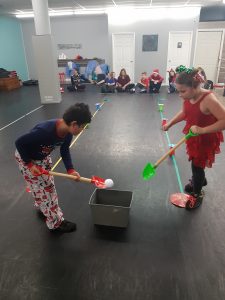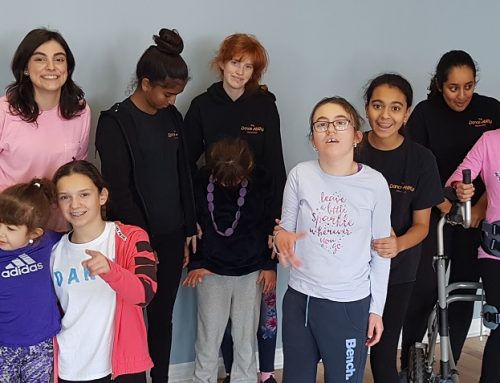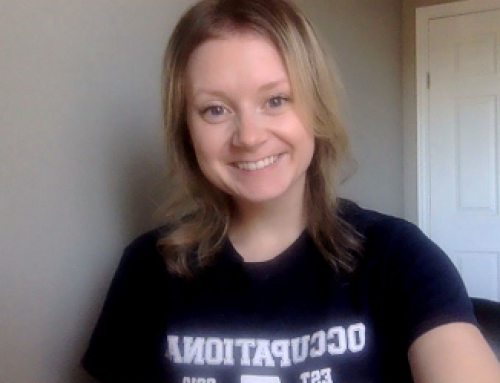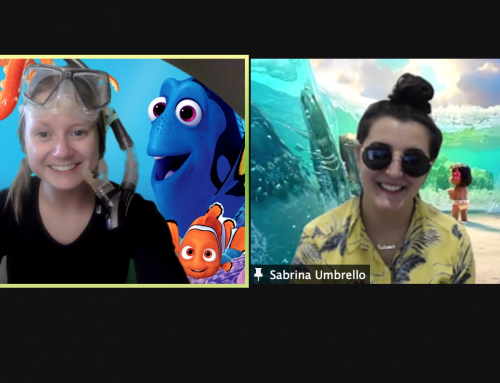 Throughout my two years as an occupational therapy student, I have learned the importance of creating an inclusive classroom and allowing individuals of all abilities to have a chance to participate in any activity they enjoy. As occupational therapists, we understand the importance that activities have on an individual’s wellbeing and mental health – each and every one of us fills our days with activities, ranging from things that we need, want or have to do. Participating in fun activities, such as sports teams or joining a dance class, is one of the fundamental ways younger children begin to learn what they enjoy and develop a sense of belonging with like-minded peers.
Throughout my two years as an occupational therapy student, I have learned the importance of creating an inclusive classroom and allowing individuals of all abilities to have a chance to participate in any activity they enjoy. As occupational therapists, we understand the importance that activities have on an individual’s wellbeing and mental health – each and every one of us fills our days with activities, ranging from things that we need, want or have to do. Participating in fun activities, such as sports teams or joining a dance class, is one of the fundamental ways younger children begin to learn what they enjoy and develop a sense of belonging with like-minded peers.
During my placement with The Dance Ability Movement, I had the chance to work on a special project that allowed me to understand all the supports and strategies that are currently being used at the Dance Ability Movement studios. These strategies, collected from OT documentation with new dancers, help to support and enhance each dancer’s participation and allow them to develop and understand what it means to belong, while participating in an activity they enjoy.
While reading through the strategies provided by Mallory and Jade, I began to realize that many of the supports in place for individual dancers were things that, if used with the whole class, may actually support every dancers’ participation. Therefore, we decided that I would create a strategy handbook that categorized the supports being used at Dance Ability Movement into three tiers – universal, targeted, and individual; a concept developed by CanChild in their Partnering for Change Model (P4C).
The basic premise behind the tiers is that if one individual in a classroom or learning setting, such as a dance class, benefits from a strategy or support, why not use that strategy with the whole class as you never know who may actually benefit from the additional support. When talking with Mallory, Jade and Clara, they provided me with an example of this concept being used in a school setting, where an elementary school teacher had a student in his class and during a math lesson the little boy had difficulty understanding what the teacher was trying to teach. The teacher challenged himself to create a way to explain the math to the boy in a different way to help him understand. Another student had also not understood the teacher’s first explanation, and when the teacher finished his explanation to the first student, the other student exclaimed, “Oh, now I understand it, this is so much easier.”
Everyone learns things in different ways and different formats, and if one individual requires a different strategy or explanation to support their participation, there is a large chance than another individual in that same class also would benefit from that same strategy.
 When talking and working with Mallory she provided me with this example of universal design in practice; “Working with Colleen from The Dance Workshop is one example of how this partnering for change model can work within a dance studio. Colleen is the studio owner, as well as the instructor for the Dance Ability Movement classes – this helps with the implementation of universal strategies and considering a more inclusive studio model. Colleen’s background and experience also align very well with our own vision and [she] strives for inclusion within her studio, as she considers the Dance Ability Movement classes to be same as her typical classes and included in all studio and community
When talking and working with Mallory she provided me with this example of universal design in practice; “Working with Colleen from The Dance Workshop is one example of how this partnering for change model can work within a dance studio. Colleen is the studio owner, as well as the instructor for the Dance Ability Movement classes – this helps with the implementation of universal strategies and considering a more inclusive studio model. Colleen’s background and experience also align very well with our own vision and [she] strives for inclusion within her studio, as she considers the Dance Ability Movement classes to be same as her typical classes and included in all studio and community  events, without us needing to remind her or advocate for this. When I first started working with Colleen and suggested tools that might help our students, such as our visual spot markers, or stop signs (on doors), Colleen immediately saw this as a helpful strategy not only for Dance Ability Movement students, but also her other classes. She inherently understands the value of teaching inclusively and recognizes that often the “strategies” we use will help MANY students learn – not just those with a “disability”. So, when we created our studio kit – Colleen ordered additional spot markers for use in other classes – and she has come up with some very creative ways to use these visual tools (and others) to teach movement and inspire all dancers. We continue to learn from each other and grow as dance teachers. Another example of how this tiered approach to service is working, is sometimes when dancers would like to take a different kind of class with Ms. Colleen, or perhaps are better suited for a different style of class (other than Dance Ability Movement) – it is an easier transition from Dance Ability Movement to a “typical” class as Colleen already has a relationship with the family/dancer and can continue to find ways to support them in other classes.” – Mallory Ryan
events, without us needing to remind her or advocate for this. When I first started working with Colleen and suggested tools that might help our students, such as our visual spot markers, or stop signs (on doors), Colleen immediately saw this as a helpful strategy not only for Dance Ability Movement students, but also her other classes. She inherently understands the value of teaching inclusively and recognizes that often the “strategies” we use will help MANY students learn – not just those with a “disability”. So, when we created our studio kit – Colleen ordered additional spot markers for use in other classes – and she has come up with some very creative ways to use these visual tools (and others) to teach movement and inspire all dancers. We continue to learn from each other and grow as dance teachers. Another example of how this tiered approach to service is working, is sometimes when dancers would like to take a different kind of class with Ms. Colleen, or perhaps are better suited for a different style of class (other than Dance Ability Movement) – it is an easier transition from Dance Ability Movement to a “typical” class as Colleen already has a relationship with the family/dancer and can continue to find ways to support them in other classes.” – Mallory Ryan
Belonging and participating in our favourite activities is a fundamental part of everyone’s daily lives, and it is important to ensure that we are doing all we can to universally support the engagement of individuals of all abilities in their favourite activities!
*Important Disclaimer: stories are shared with the intention of promoting an inclusive society and increasing knowledge and awareness of our community. Views expressed are not representative of all participants and may not be indicative of your potential experiences.





